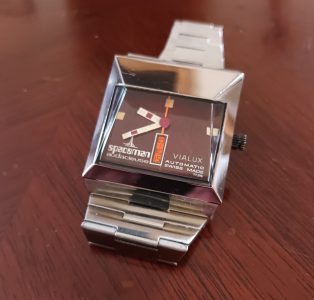As indicated elsewhere, I really do not buy peculiar/quirky watches. However, on a fairly recent trip to an antiques market I noticed a real oddity which shrieked 60s/70s style in spades. In the cabinet there was also a useful information sheet and this imparted a story that I was frankly unaware of. After having handled the watch I decided to buy – after a little habitual haggling!
Before proceeding, there is actually a fair amount of Spaceman information on the internet. In particular, Elizabeth Doerr wrote a fairly recent insightful and succinct article which is well worth reading (Quill & Pad June 2020, Ed). As such I shall not regurgitate all information again here, but will attempt to provide a brief overview.
So, back in the late 60’s, one Max Huber was visiting the offices of watch manufacturer Catena when he noticed a strange watch in the drawer of boss Claude Lebet. Max was fascinated and asked about it. Lebet said that an architect – who had done some artwork at their new premises, had come up with it – at his (Lebet’s) request. The designer was the Anglo/Swiss architect Andre Le Marquand. In fairly short order the pair had hatched a plan to produce the watch.
In 1969, the Spaceman watch emerged. It was pretty revolutionary – both in shape, construction and material employed. The watch was an oval egg-like affair and made of chromed metal and fibreglass. It was fairly large at 50x42x18 mm. It was secured by an imitation leather skeleton strap (Corfam, patented and produced by Dupont. Ed.) Some six colours were available.
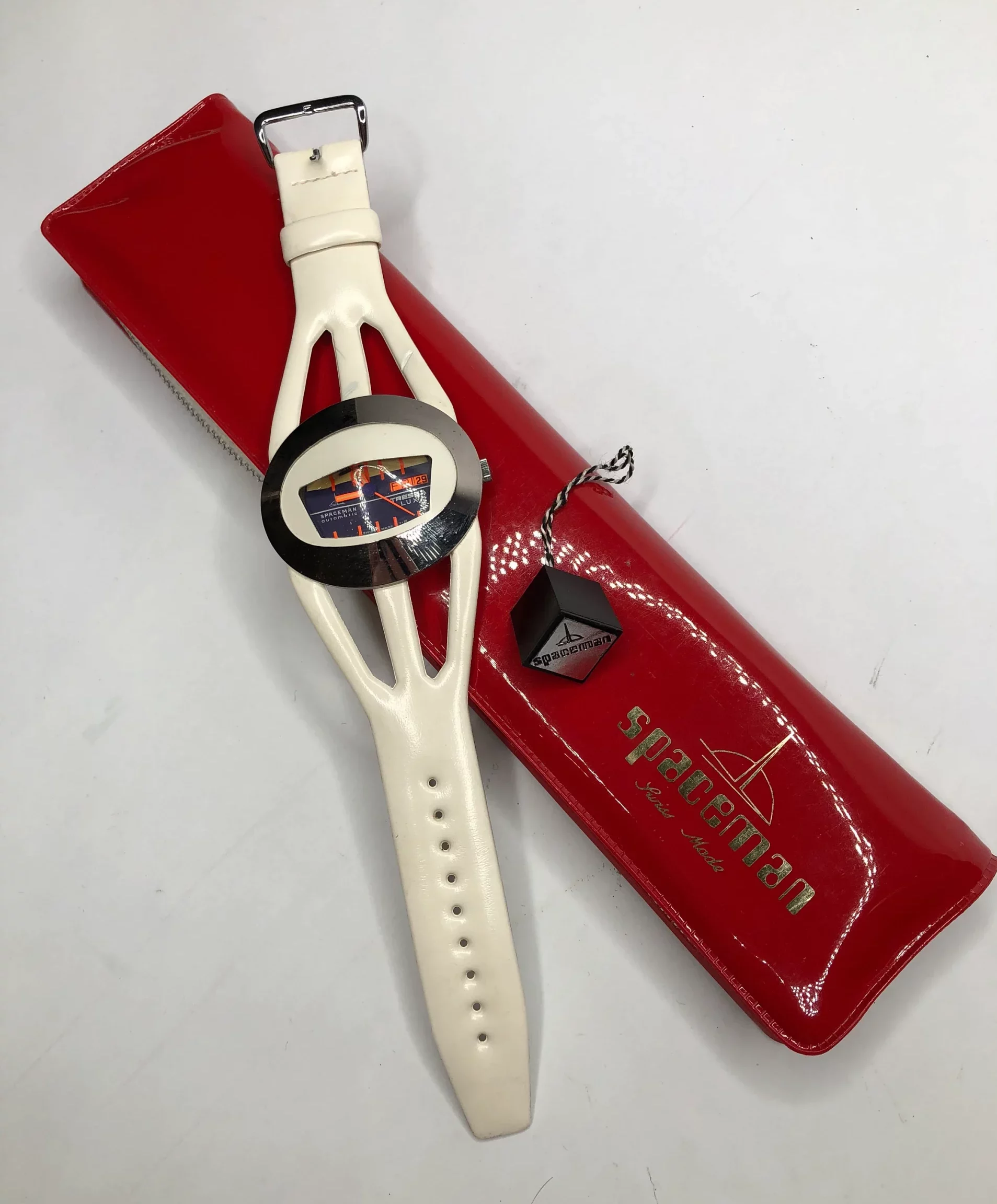
The whole concept was in homage to the current frenzy of space travel. The basic shape harked to a flying saucer, with the the crystal and its semi-closed visor mimicking an astronaut’s helmet.
The watch was automatic and invariably powered by a variety of A Schilds movements – depending on whether the watch was time only, time/date, or time/day/date. The dial was minimalist, with very modern looking rectangular hands. The day/date was at 6 o’clock when offered.
The watch proved very successful with some 40,000 being sold in fairly short order. In 1974, a follow-up model was launched and looked quite different, but still very space-age. This was the Spaceman Audacieuse (audacious), which had a square chromed metal case of some 50x42x18 mm proportions (a small number also appear to have been gold plated. Ed) along with an angled three plane crystal. The watch usually came on an integrated folding clasp bracelet, but sometimes on a glossy strap too. The dial and hands were broadly the same as the first watch, with the former available in several colours/finishes – such as white, cherry red, wood effect dark brown/maroon, black, and a rare brown leather! As before, different automatic complications were available, but also some were quartz powered.
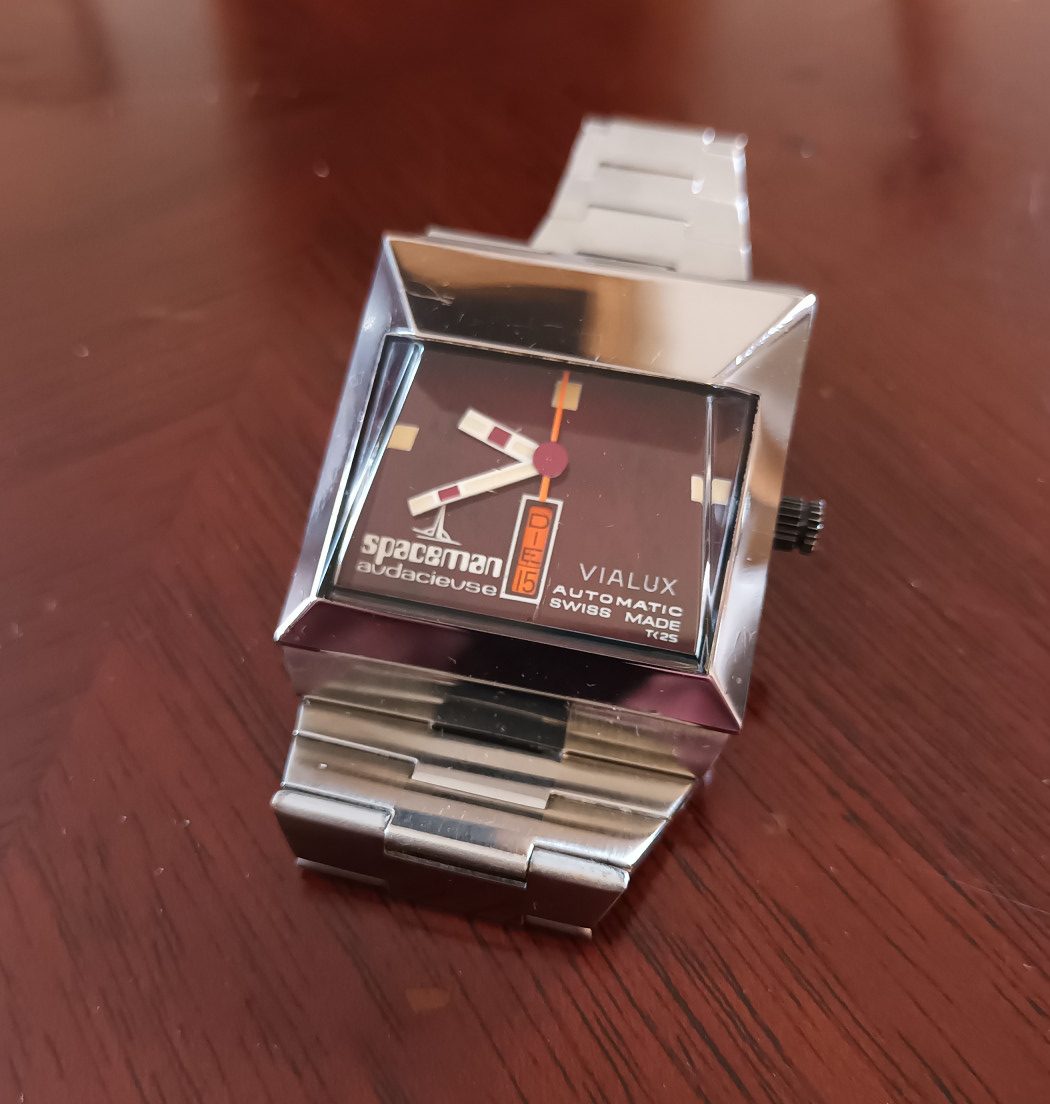
In 1977 another superseding model came out – the Spaceman Carre, plus an LCD model, the Spacetronic. These were not as successful as the others so I shall not go into further detail on these.
At the end of the main production run in 1982 some 150,000 units in total had been sold. Apparently Catena/Huber did sell some more first model watches up to the end of the 90’s from NOS parts, and it is understood that by the end of this a further 15,000 units had been sold. All told, not bad for a chance discovery!
Lastly on the history, although Catena made the bulk of the earlier Spacemans, other manufactures did make later models under license and were sold showing their own names. So, on the Audacieuse in particular, you will see the names; Zeno, Omax, Fortis (mainly white dials), Kotana (leather dial) and Vialux. There are some other designs and colours too.
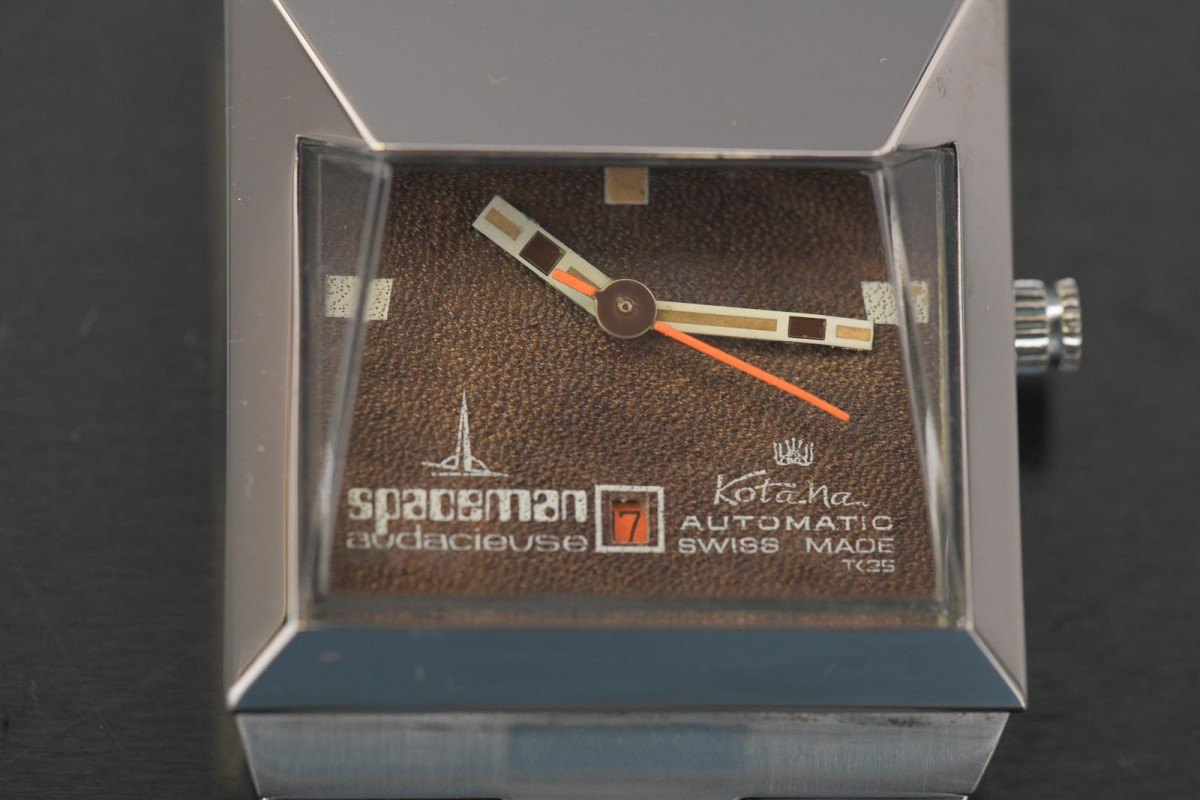
Turning to my watch, this is in fact a Vialux from 74-77 and undoubtedly for the German-speaking market judging by the day display. It has the rare stacked day/date complication. In fact I think it is rarer-still as a search on the internet shows that the vast majority of the day/dates were made by Omax. The watch has a deep brown maroon dial with what seems to be almost a wood effect present, with the same hints on the hands, along with cream lume. There are but three indexes at 12, 3 and 9 – basically just large lumed (Tritium) squares. The trademark bright orange appears on the second hand and the day/date display.
The watch is on a bracelet and is actually quite comfortable. I also report that the watch still retains it’s original crown, which, honestly, is not that aesthetically pleasing, being very “industrial” looking. It is though very practical due to the vertical grooves and horizontal recess. Gripping for adjustment purposes is therefore easier than most older watches. Alas, a small admission here which nearly scuppered that aspect: Two days after getting the watch I decided to pop the snap-back to see the movement. Now, there is the usual lip on the side of the disc, but whoever was last in there put it back in the wrong position so the lip was now right next to the crown. I inserted the correct blade tool as carefully as I could, and was just easing it off, when, wham, it slipped and hit and bent the crown. I thought I had got away with it, but alas when I went to pull out the crown, it, er, came off in my hand! Yes, it had broken with part of the stem still in the crown. Needless to say I was livid – not just with myself, but the miscreant that had replaced the back – pretty obviously wrong as the writing was askew! Anyway, long story short, I contact Rich Askham who said he could probably repair and would try to keep the crown. Off the watch went, and Rich commenced a gradual process of dissolving the busted stem in the crown – I am not quite sure about the detail here, but it worked! A replacement stem was sourced and installed, the watch checked over and then returned and all was good. Again, the repair cost was pretty reasonable at some £60 odd.
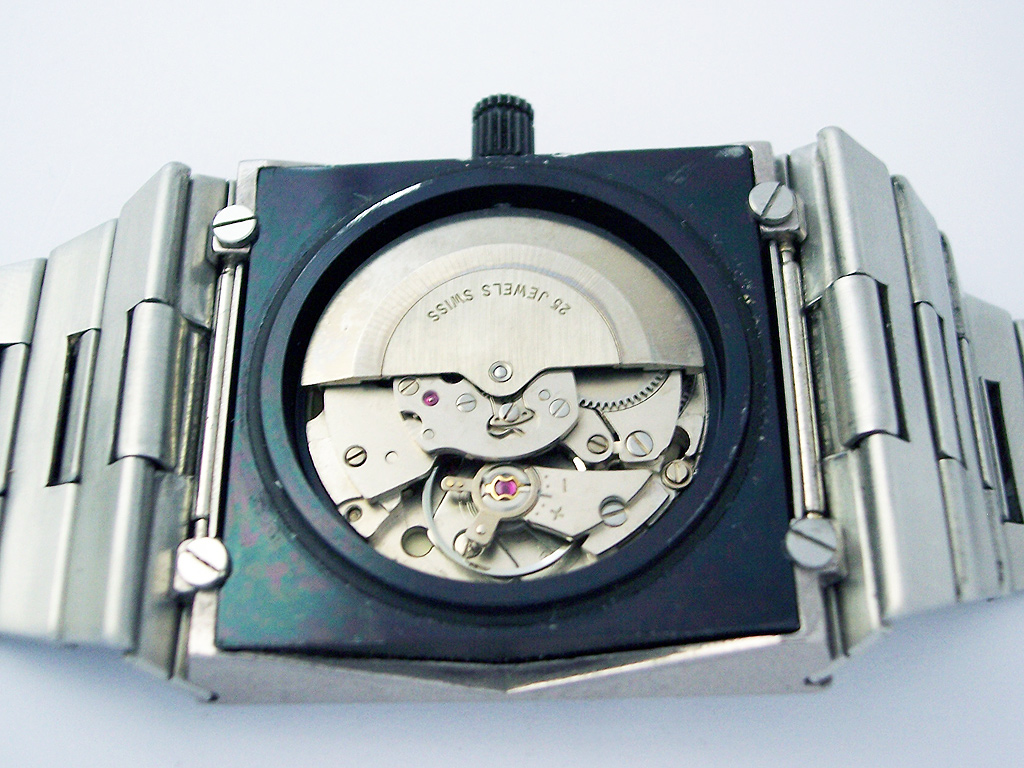
The movement in my watch is an A Schild automatic caliber 2066, which has 25 jewels and 46 hrs power reserve. It was made between 1969 and 1979 for watches that required a day/date function with quick-set, along with the potential for displaying one or two languages. So, whilst not haute horlogerie, it has useful features, is well made, reliable, and easy/cheap to repair – even though the firm is long out of business.

In conclusion, audacious? Well, I would say so! I have a piece of architectural, horological, and space-induced design at fairly low cost – £350-£400. The watch is quite wearable and functional and is of course a talking point. Although the movement is a bit workhorse, it is pretty good and can be readily and cheaply repaired. Overall, there is little not to like. Incidentally, there were two (first design) Spaceman watches for sale at the same vendor – for a bit more (£500ish). I did think about buying one at the same time, but although looking NOS, the strap being what I thought was rubber, so could be perished and fallen apart, I decided to pass. (I bought a couple of NOS electronic watches for sports – from the 1990s, and both had rubber type straps that just crumbled when bent. Ed). That said, now I know more, I may just see if I can get one!
Words/Images: The Writer unless stated otherwise.

